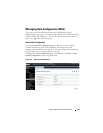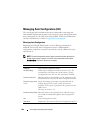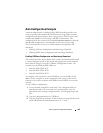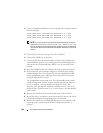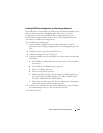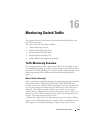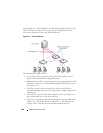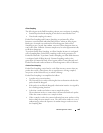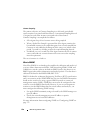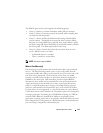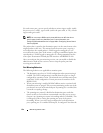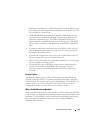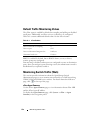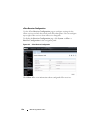
Monitoring Switch Traffic 409
sFlow Sampling
The sFlow Agent in the Dell Networking software uses two forms of sampling:
• Statistical packet-based sampling of switched or routed Packet Flows
• Time-based sampling of counters
Packet Flow Sampling and Counter Sampling are performed by sFlow
Instances associated with individual Data Sources within an sFlow Agent.
Both types of samples are combined in sFlow datagrams. Packet Flow
Sampling creates a steady, but random, stream of sFlow datagrams that are
sent to the sFlow Collector. Counter samples may be taken opportunistically
to fill these datagrams.
To perform Packet Flow Sampling, an sFlow Sampler Instance is configured
with a Sampling Rate. Packet Flow sampling results in the generation of
Packet Flow Records. To perform Counter Sampling, an sFlow Poller Instance
is configured with a Polling Interval. Counter Sampling results in the
generation of Counter Records. sFlow Agents collect Counter Records and
Packet Flow Records and send them as sFlow datagrams to sFlow Collectors.
Packet Flow Sampling
Packet Flow Sampling, carried out by each sFlow instance, ensures that any
packet observed at a Data Source has an equal chance of being sampled,
irrespective of the Packet Flow(s) to which it belongs.
Packet Flow Sampling is accomplished as follows:
• A packet arrives on an interface.
• The Network Device makes a filtering decision to determine whether the
packet should be dropped.
• If the packet is not filtered (dropped) a destination interface is assigned by
the switching/routing function.
• A decision is made on whether or not to sample the packet.
The mechanism involves a counter that is decremented with each packet.
When the counter reaches zero a sample is taken.
• When a sample is taken, the counter indicating how many packets to skip
before taking the next sample is reset. The value of the counter is set to a
random integer where the sequence of random integers used over time is
the Sampling Rate.



